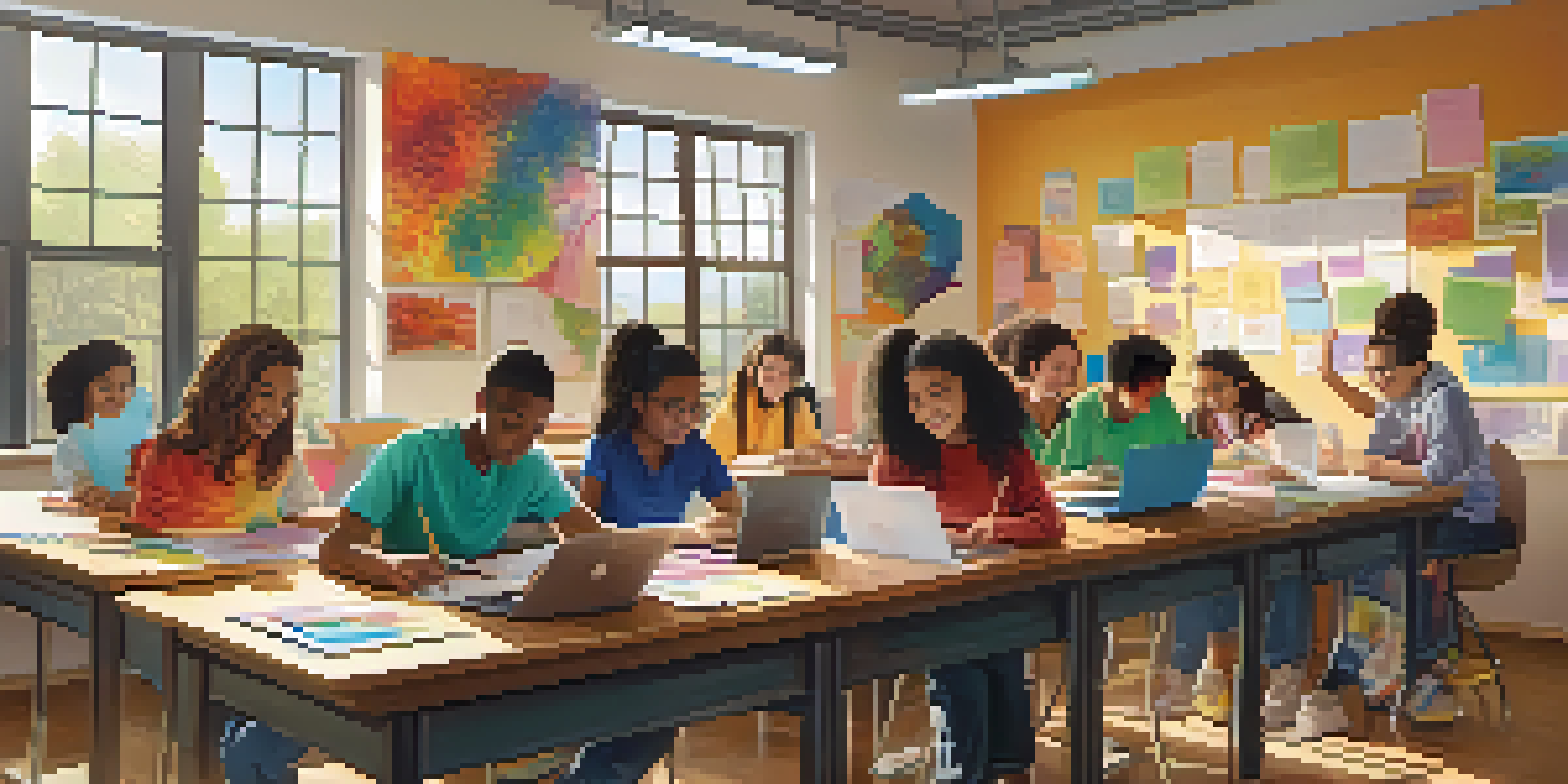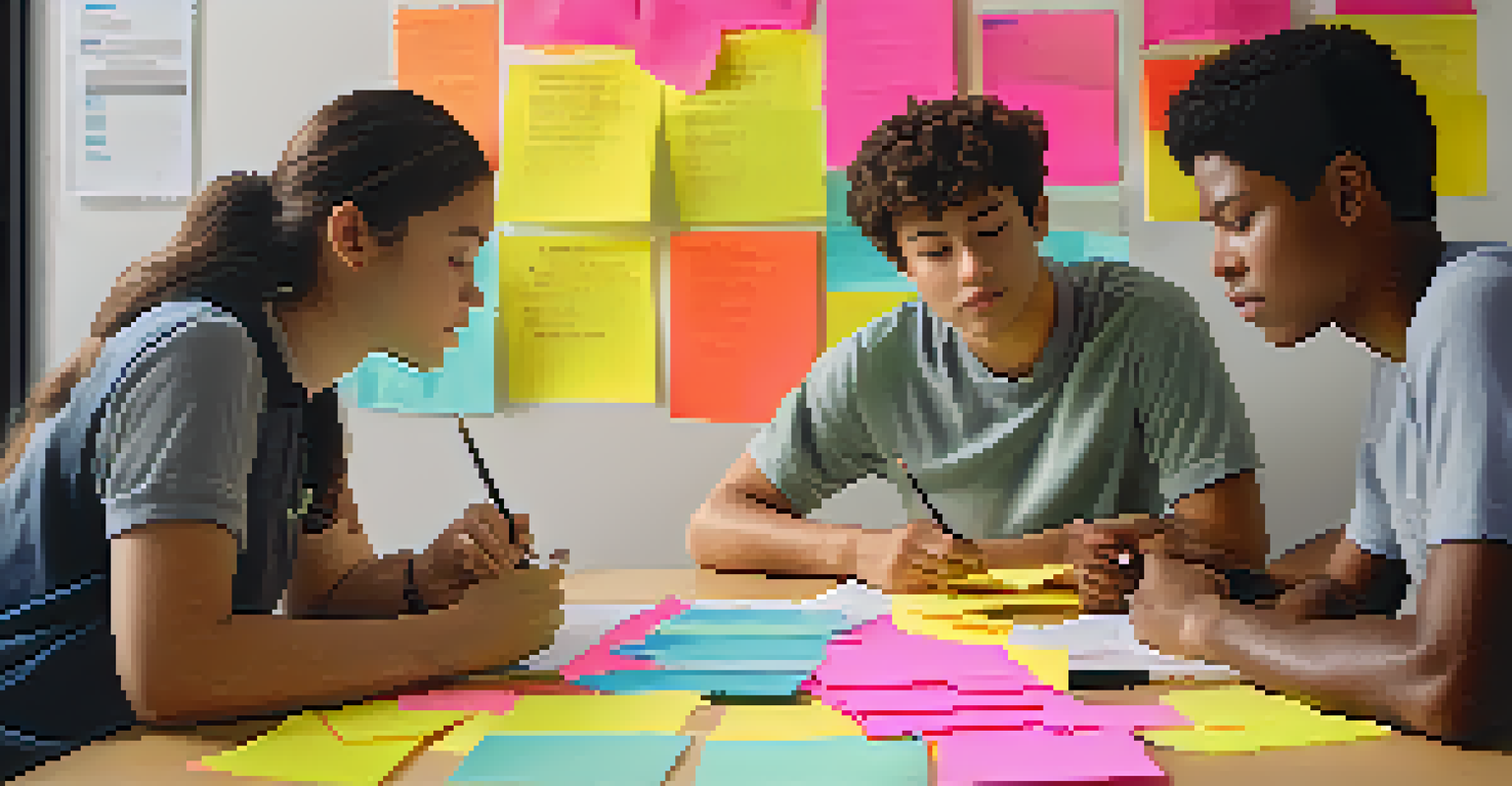Facilitating Effective Group Work in Student-Centered Classrooms

Understanding the Importance of Group Work in Education
Group work is a vital component of student-centered classrooms as it promotes collaboration and communication among students. When students work together, they not only share their knowledge but also learn to appreciate different perspectives. This collaborative environment mirrors real-world situations where teamwork is crucial, preparing students for future challenges.
Alone we can do so little; together we can do so much.
Moreover, group work encourages active learning, allowing students to engage deeply with the material. Instead of passively absorbing information, they become co-creators of knowledge. This hands-on approach can lead to higher retention rates and a more profound understanding of the subject matter.
In essence, effective group work fosters critical thinking and problem-solving skills. When students tackle tasks together, they learn to negotiate, compromise, and think outside the box. These skills are essential not just in academics but in everyday life as well.
Setting Clear Expectations for Group Work
To facilitate effective group work, it's essential to establish clear expectations from the outset. Students should understand their roles and responsibilities within the group, ensuring everyone is on the same page. This clarity can help prevent misunderstandings and promote accountability among group members.

Additionally, outlining specific goals for each group project can guide students in their collaboration. Having a clear objective allows students to focus their efforts and work towards a common purpose. This targeted approach can enhance productivity and foster a sense of achievement when they reach their goals.
Collaboration Enhances Learning
Group work fosters collaboration, helping students appreciate diverse perspectives while developing critical thinking and problem-solving skills.
Lastly, encouraging open communication about expectations can further strengthen group dynamics. Students should feel comfortable discussing their thoughts and concerns, which can lead to a more cohesive and collaborative environment.
Creating Diverse Groups for Enhanced Learning
Diversity in group formation can significantly enrich the learning experience. By mixing students with different backgrounds, skills, and perspectives, you create a vibrant environment where various ideas can flourish. This not only enhances creativity but also prepares students for the diverse world outside the classroom.
Coming together is a beginning; keeping together is progress; working together is success.
Moreover, diverse groups encourage students to step out of their comfort zones. When working with peers who think differently, students learn to consider alternative viewpoints and develop empathy. This growth is invaluable as it helps students become more open-minded and adaptable individuals.
Finally, fostering an inclusive atmosphere within diverse groups is crucial. Students should be encouraged to share their unique insights, ensuring that every voice is heard and valued. This respect for diversity can lead to richer discussions and a more profound understanding of the subject matter.
Supporting Roles: Teacher's Involvement in Group Work
While student-centered classrooms emphasize student autonomy, the teacher's role remains vital in facilitating group work. Teachers should act as guides rather than authoritative figures, providing support and resources as needed. This approach empowers students to take charge of their learning while still having access to guidance.
Monitoring group dynamics is another crucial aspect of the teacher's involvement. By observing interactions and providing feedback, teachers can help students navigate challenges and enhance their collaboration skills. This support can be particularly beneficial for students who may struggle with teamwork or communication.
Clear Expectations Boost Success
Establishing clear roles and goals for group projects promotes accountability and enhances productivity among students.
Additionally, teachers can encourage reflection after group activities. Prompting students to discuss what worked well and what could be improved fosters a growth mindset and helps them develop their collaboration skills further.
Integrating Technology to Enhance Group Work
In today's digital age, technology can play a significant role in facilitating effective group work. Tools like collaborative documents, project management apps, and communication platforms can streamline the process, making it easier for students to collaborate. This access to technology can enhance engagement and make group projects more interactive.
Moreover, technology allows for flexibility in how groups function. Students can collaborate in real-time or asynchronously, accommodating different schedules and learning styles. This adaptability can lead to a more inclusive environment where all students can contribute meaningfully.
Lastly, integrating technology can prepare students for future workplaces, where digital collaboration is often the norm. By using these tools in the classroom, students develop essential skills that will serve them well in their careers.
Encouraging Peer Feedback for Continuous Improvement
Peer feedback is an invaluable component of group work that promotes continuous improvement. By encouraging students to provide constructive feedback to each other, you foster a culture of learning and growth. This process not only helps students refine their ideas but also builds their critical thinking skills.
Additionally, peer feedback can enhance communication skills as students learn to articulate their thoughts and offer suggestions respectfully. This practice prepares them for future collaborative environments where feedback is essential for success. It also helps students develop the ability to receive feedback graciously, an important life skill.
Diversity Enriches Group Dynamics
Creating diverse groups encourages students to explore different viewpoints, fostering empathy and adaptability in their learning experience.
Creating structured feedback sessions can further enhance this process. Providing guidelines for effective feedback ensures that students understand how to critique constructively and encourages a supportive atmosphere within the group.
Assessing Group Work: Fair and Effective Evaluation Strategies
Assessing group work can be challenging, but employing fair and effective evaluation strategies is crucial for accountability. One approach is to use peer assessments, where students evaluate each other's contributions to the project. This method not only encourages accountability but also provides insights into each member's strengths and areas for improvement.
Additionally, incorporating self-assessments allows students to reflect on their contributions and collaboration skills. This reflection can lead to greater self-awareness and a deeper understanding of their learning process. Combining peer and self-assessments can create a comprehensive evaluation system that acknowledges individual efforts within the group context.

Finally, providing clear rubrics for assessment can guide students in understanding expectations. Transparent criteria can help students focus their efforts and ensure a fair evaluation process that recognizes both individual and group achievements.